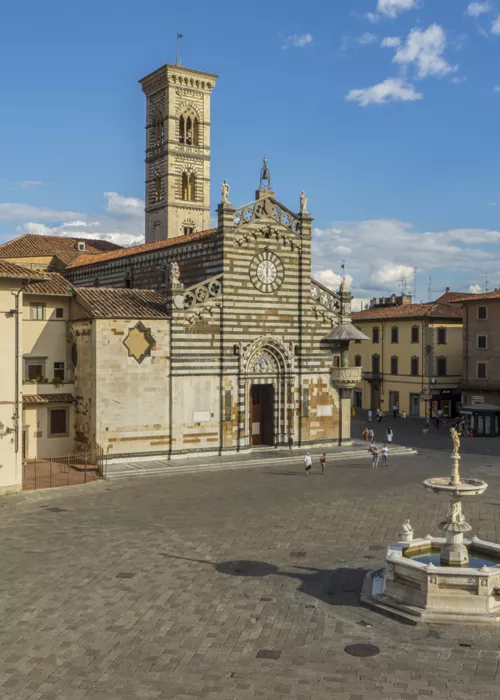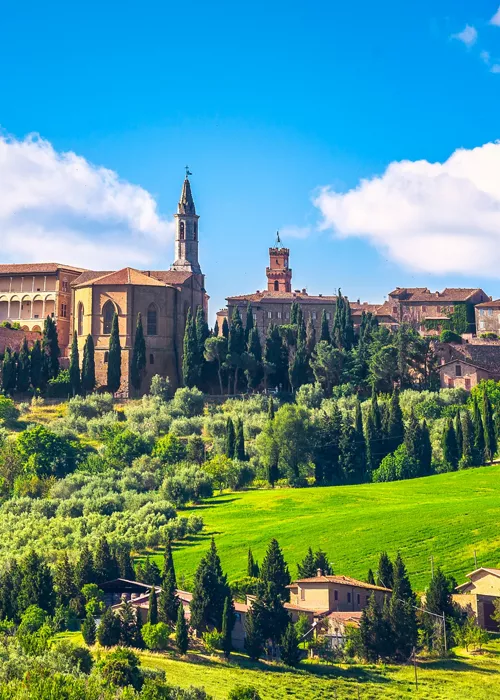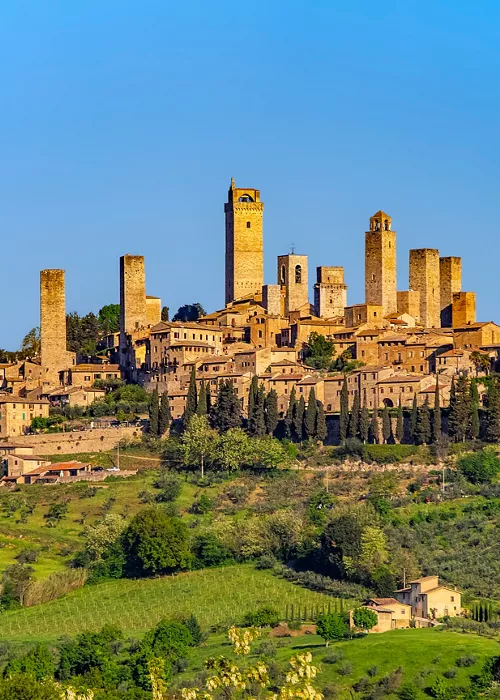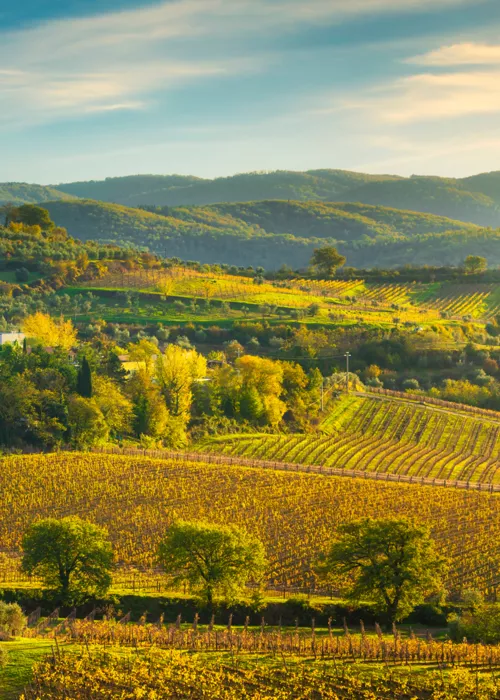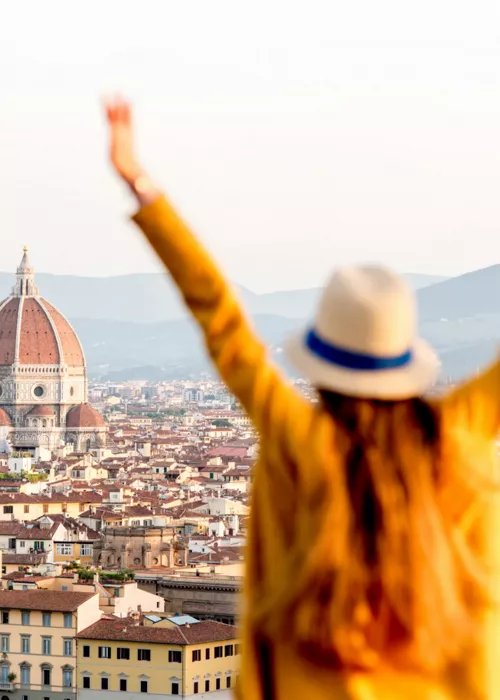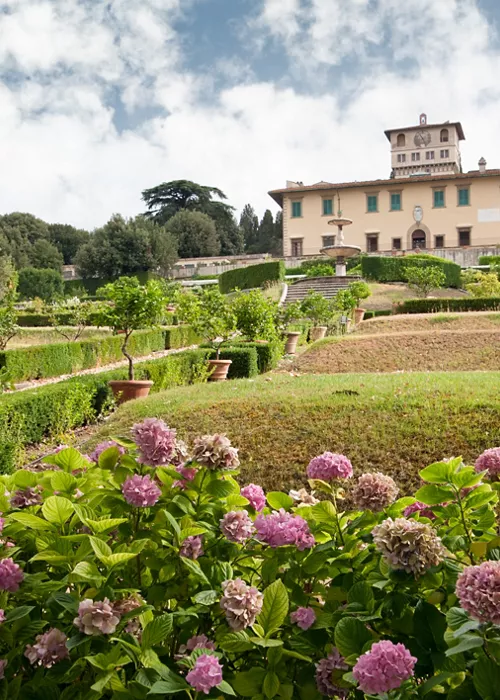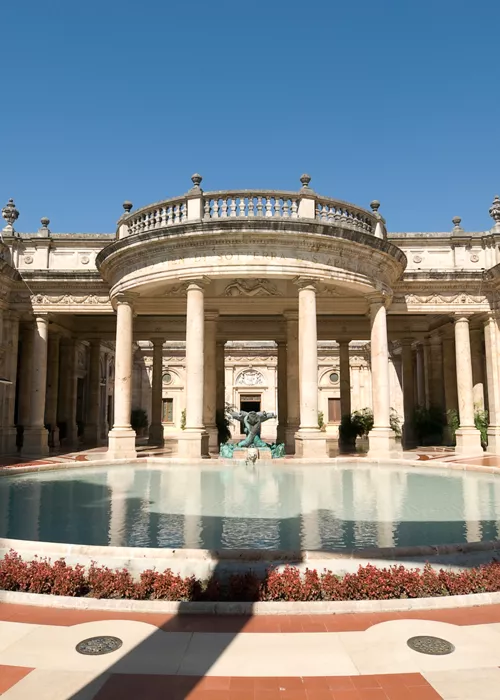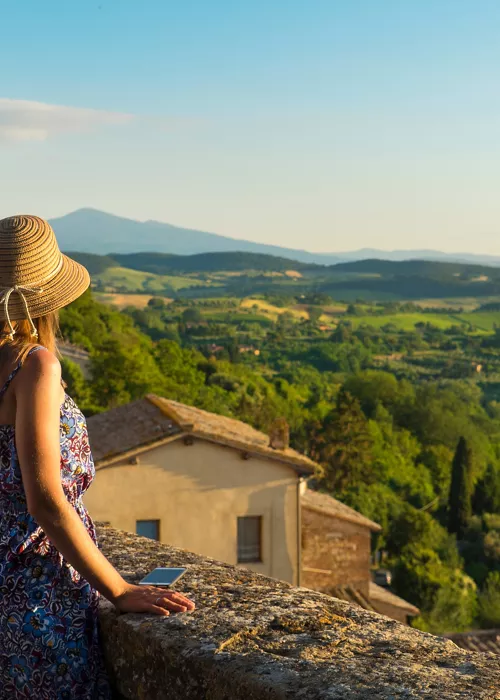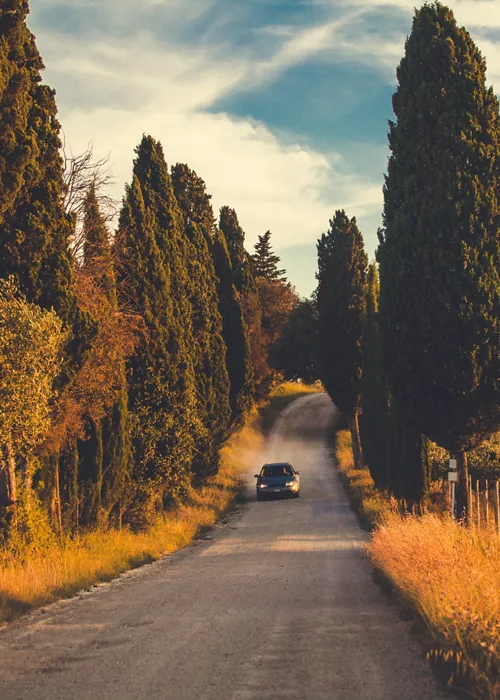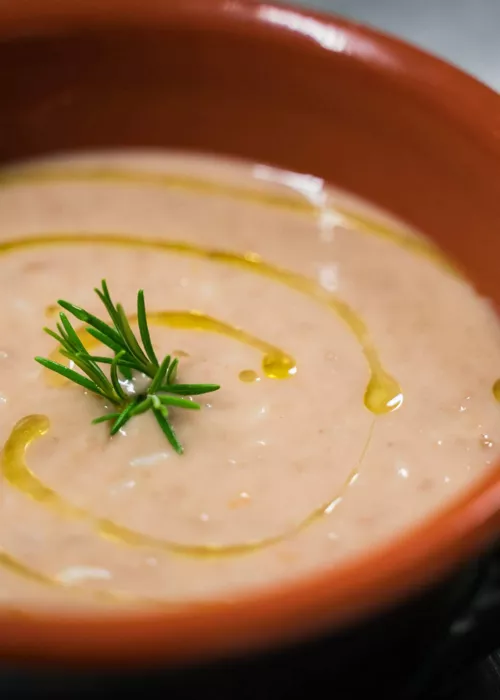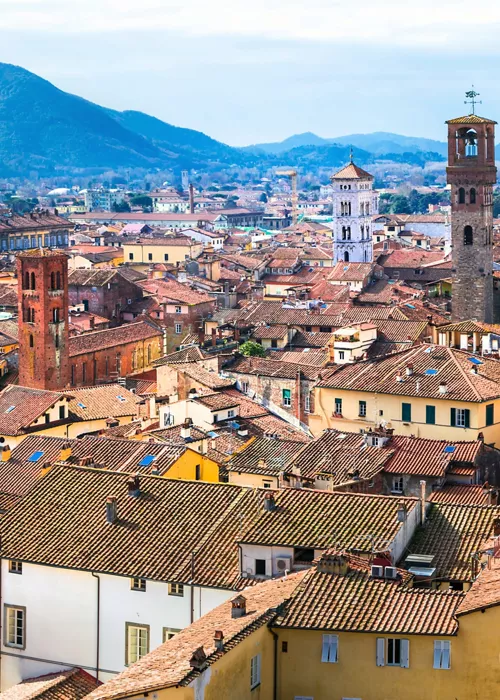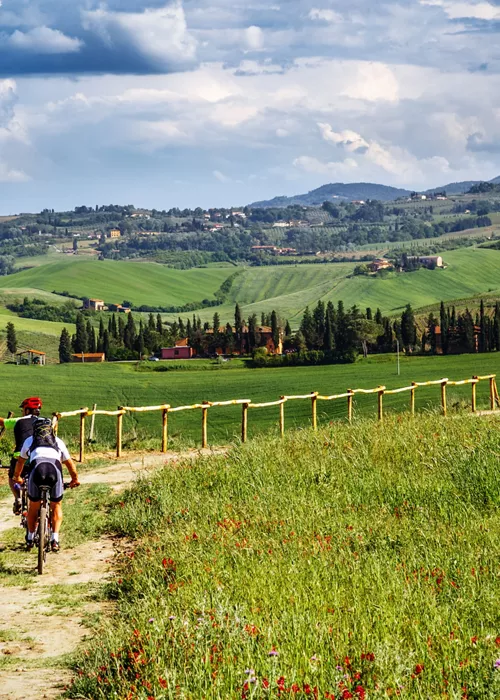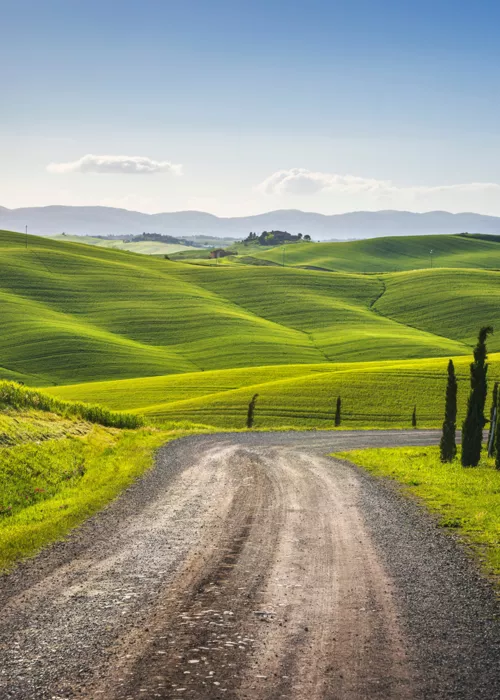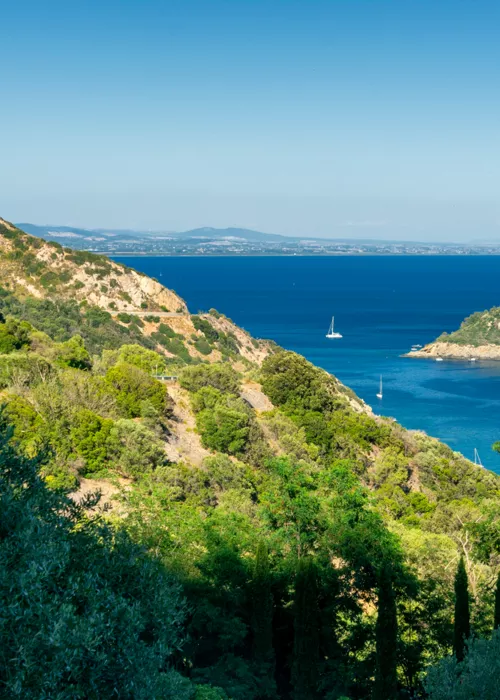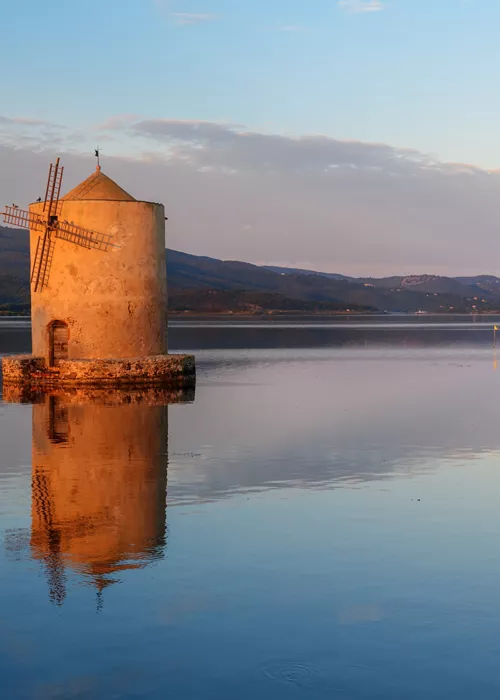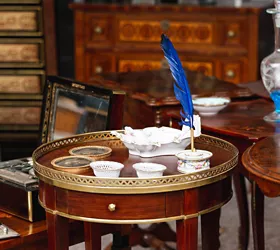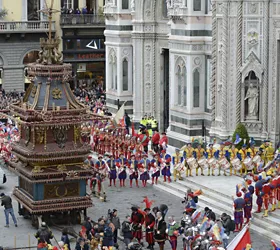3 Charming Villages in Southern Tuscany Worth Visiting
10 minutes

Index
There are many places to visit in Tuscany, but in this article, I will take you to discover some of the most unknown and surprising villages in the south of this beautiful Italian region: Pitigliano, Sovana, and Sorano.
All three are fairytale villages, full of history, with charming places, incredible sunsets, and unique cuisine.
I’m sure that they will surprise you as much as I did, and that some of them you have never heard before.
Pitigliano

When I arrive in Pitigliano I fell in love at first sight with this medieval village. Without a doubt, one of the most charming towns in Southern Tuscany.
Besides, it was certified with the Orange Flag of the Italian Touring Club, and named one of the most beautiful villages in Italy.
Did you know that this village in Southern Maremma was built on a promontory under a large rock of volcanic tuff?
Also, the Etruscans built their necropolises in this area of Tuscany, and during my trip, I was able to find paths and excavations in the middle of the forest, right under Pitigliano.
This village is also known as Little Jerusalem, because of the large Jewish community that settled there in the 15th century.
Top 5 things not to miss
- Jewish Ghetto and the Synagogue
- Alberto Manzi Archaeological Museum
- Cathedral of Saint Peter and Saint Paul
- Watch the best sunset in Pitigliano from Via San Michele
- Food/Wine to taste: Pappardelle al cinghiale (with wild boar ragù), Sfratto di Pitigliano and Pitigliano DOC White wine tasting at the small Sassotondo winery
To get to know the village, there is nothing better than getting lost among its old cobbled streets and visiting its alleys full of little houses with wooden doors and facades with colorful flowers.
Besides, some of the alleys that overlook the cliff have incredible views.

There are so many things to do in Pitigliano, but here is the most important and what I liked the most during my visit:
The Alberto Manzi Archaeological Museum is an open-air museum, but it’s much more than a museum. It is a unique experience, where you will immerse yourself in Etruscan history.
This is an archaeological area where you can discover the Etruscan Necropolis of Gradone and S. Giovanni, connected by the spectacular Via Cava del Gradone.
The first necropolis was in use until the end of the 6th century BC; the second, until the 4th-3rd centuries B.C.
To know more about a very important part of the history of Pitigliano, a visit to the Jewish Ghetto and the Synagogue is a must.
During the Orsini rule, the Jews had all their rights and could live anywhere in Pitigliano, and work in their trades as merchants and craftsmen.
Although, when the Medici arrived, supporters of the guidelines of the Pope from Rome, forced the Jews to live in the ghetto, with very strict rules and without the rights they previously had.
Currently, in Pitigliano, there are only 3 members of the Jewish community, among whom Elena Servi stands out, the last Jewish woman born in Pitigliano, who is also the founder of the Associazione "La Piccola Gerusalemme", whose purpose is the conservation and value of the artistic and cultural heritage of the Jewish Community of Pitigliano.
During the visit, I was able to see the old ghetto, visit the Synagogue (built-in 1598), and learn about the history of the Jews of Pitigliano.
In addition, it’s possible to visit the underground caves where the unleavened bread oven, the ritual bath, the cellar, and the Kosher slaughterhouse were located.
And I couldn’t leave Pitigliano without tasting the most typical sweet of Pitigliano, the Sfratto, which also has a Jewish origin. This hard cane is made from flour, sugar, white wine, honey, olive oil, cinnamon, cloves, pepper, and orange peel. It was so delicious!
The Orsini Palace was formerly the home of Romano Orsini.
This 14th-century palace originally belonged to the Aldobrandeschi family, lords of Maremma, and later became the home of Romano Orsini.
It currently houses the Civic Archaeological Museum and the Orsini Palace Museum. The latter contains a collection of sacred art.
The Cathedral of St. Peter and St. Paul in Piazza S. Gregorio VII.
It’s one of the most important churches in the south of Toscana, dating from 1061. The façade is divided into three parts by four large pilasters.
Outside, to the left of the cathedral, is the bell tower that was originally used for civil and military activities.
Strada Panoramica or Pitigliano panoramic path
Strada Panoramica is the perfect place for lovers of nature and hiking. The path circles around Pitigliano and during the walk I saw the gardens with plantations of the villagers, the small cellars dug out of the volcanic tuff, and the remains of Etruscan settlements.
The viewpoint of the Chiesa della Madonna delle Grazie
This viewpoint is located just before reaching the village and has incredible views of all of Pitigliano. (In the GPS it is necessary to indicate: Viewpoint Pitigliano Panorama).
Other places to visit in Pitigliano are:
- Porta della Cittadella,
- Church of Santa Maria and San Roque,
- Fontana delle Sette Cannelle in Piazza Della Repubblica,
- the Monument "Al Villano" which has beautiful views, and
- the Pitigliano Aqueduct.
In the surroundings of Pitigliano, just half an hour away by car, you can visit the incredible Saturnia Termes. These large open-air hot springs pools are located near an old mill, and public access is free all year round.
What to eat in Pitigliano
In Pitigliano, you can try the typical gastronomy of this area of Tuscany, with organic production, proximity, Denomination of Origin wines, and pasta made with whole wheat from the tuff gardens.
- Try the pappardelle al cinghiale (with wild boar ragout)
- Grab the tagliatelle ai funghi porcini (with mushrooms from Pitigliano)
- Taste the Pitigliano DOC white wine in any restaurant in town or have a wine tasting.
- And don't leave without tasting the famous Sfratto of Pitigliano.
Pitigliano - Useful information
Best time to visit: The best months for good weather in Pitigliano are from April to October.
I traveled at the end of September and I think it is the perfect time to visit this area of Tuscany since there are fewer tourists, the temperature is not as hot as in summer and the high season is over.
How to get there: Some buses run through the villages of Tuscany, but the fastest way to get there is by driving. From Pisa, the trip is about 2 hours and a half.
The closest city is Siena and you can get from there to Pitigliano by bus. The journey takes 3 hours.
Sovana

The small village of Sovana, which is very close to Pitigliano, transported me to the times of the Etruscans since its history is linked to this town of Antiquity.
Its first inhabitants built the foundations of the old "Suana" on the volcanic tuff. In the Middle Ages, Ildebrando di Soana was born, who later became Pope Gregory VII.
Top 5 things not to miss
- Rocca Aldobrandesca Fortress
- Church of Santa Maria Maggiore
- San Mamiliano Museum
- Sovana necropolis
- Via Cava del Cavone and Via Cava San Sebastiano
As soon as I arrived in Sovana I started with a walk along the main street. Nothing better than getting lost in its streets to discover all its secrets.
In an hour I visited the historic center of the village and was enchanted by all its wonders. No wonder it has been named one of the most beautiful villages in Italy.
Although Sovana is a very small medieval village, it has quite a few things to see:
The Rocca Aldobrandesca Fortress, where the ruins of the impressive Rocca Aldobrandesca are located. It was built by the powerful Aldobrandeschi family in the 11th century and later rebuilt by the Medici. It is currently in ruins, but it is well worth a visit.
The San Mamiliano Museum, where is "Il Tesoro di Sovana", with almost 500 gold coins from the 5th century; and the objects found at the entrance to the "Cavone".
In the main square of Sovana, there are several well-preserved palaces such as the Bourbon del Monte Palace and the Palazzo Pretorio.
The Church of Santa Maria Maggiore is a historical example of the transition from the Romanesque to the Gothic style. Inside I saw very well-preserved frescoes, the holy water font from 1615, and the remains of San Mamiliano.
The Communal Palace, located in the center of the main square of Sovana, is one of the most curious stone buildings in the village.
The Birthplace of Hildebrando di Soana, who was Pope Gregory VII between 1073 and 1085.
The Co-Cathedral of Saint Peter and Saint Paul is one of the most important Gothic-Romanesque buildings in Tuscany.

On the outskirts of Sovana, there is the Città del Tufo Archaeological Park, which houses the Sovana Necropolis, with 2,500-year-old Etruscan tombs, including the famous Tomba Ildebranda.
I entered inside some of the tombs to see how well-preserved they are despite the passage of time.
In this archaeological park, I was also able to visit the Vías Cave, huge corridors over 20 meters high, excavated in the volcanic tuff. They are impressive!
Exactly what these Cave Paths were used for is not known, so this mystery makes them even more special. Among the most spectacular are the Via Cava del Cavone and the Via Cava San Sebastiano.
Sovana - Useful information
Best time to visit: The best months for good weather in Sovana are from April to October.
I traveled at the end of September and I think it is the perfect time to visit this area of Tuscany since there are fewer tourists, the temperature is not as hot as in summer and the high season is over.
How to get there: Some buses run through the towns of Tuscany, but the fastest way to get there is by driving. From Pisa, the journey is about 2 hours and a half.
The closest city is Siena and you can get from there to Pitigliano by bus. The journey takes 3 hours. Then you have to take the 18P bus that takes you to Sovana in 10 minutes.
Sorano

The medieval village of Sorano is carved into the tuff, on a cliff, and is also known as Matera de Toscana, for its rocky landscapes and the cave routes (Vias Cava) that surround it.
Besides, it was certified with the Orange Flag of the Italian Touring Club, which represents a brand of quality and excellence in tourism and the environment.
Just before entering the village, on Via Ildebrando da Sovana, there are incredible views of the whole of Sorano from afar, where you can perfectly appreciate where it is situated on top of the volcanic tuff.
Top 5 things not to miss
- Masso Leopoldino
- Church of the Collegiate Church of San Nicola
- Orsini Fortress
- Viewpoint: Beautiful views at Via Ildebrando da Sovana
- Food/Wine to taste: gnocchi al tartufo, Pecorino cheese, Fagiolo Ciavattone and olive oil.
It is a very charming village, and it gave me the feeling that I have teleported to the past.
In fact, this village dates back to the Iron Age, to later arrive the Etruscans; and finally belong to the Aldobrandeschi family, who fortified it and turned it into a defensive village.
When I visited Sorano, the first thing I did was wander around, see the little houses leaning on each other, and get lost in its cobblestone alleys. But in addition to its beautiful streets, Sorano has a lot to see:
- The Ottocentesco Aqueduct is located at the entrance to the village.
- The Church of the Collegiate Church of San Nicola, where the baptismal font from 1563 stands out.
- The old Jewish ghetto and its small synagogue can be visited.
- Masso Leopoldino has incredible views of the fortress and the entire village of Sorano.
- The Orsini Fortress is an impressive fortified structure, which was built by the Aldobrandeschi family, and later enlarged by the Orsini family. The entire fortress can be visited, and currently houses the Museum of the Middle Ages and the Renaissance.
- The two entrance gates to the village: Porta dei Merli and Porta di Sopra. The latter is the entrance that leads directly to the historic center of Sorano.
After visiting Sorano, I got hungry, so I went looking for typical dishes here: Tartufo gnocchi and the local cheese board, and I thought they were delicious.
After an intense day getting to know these beautiful Tuscan villages, there is nothing better than visiting the Terme di Sorano, and relaxing in its pools with thermal waters that emanate at a constant temperature of 37.5 degrees Celsius. This thermal center is located just 6 minutes by car from Sorano.
Sorano - Useful information
Best time to visit: The best months for good weather in Sorano are from April to October.
I traveled at the end of September and I think it is the perfect time to visit this area of Tuscany since there are fewer tourists, the temperature is not as hot as in summer and the high season is over.
How to get there: There are buses that run through the towns of Tuscany, but the fastest way to get there is by driving. From Pisa, the journey is about 2 hours and a half.
The closest city is Siena and you can get from there to Pitigliano by bus. The journey takes 3 hours. Then you have to take the 18P bus that takes you to Sorano in 12 minutes.
Article written about the experience of Sara Rodríguez Bravo.


